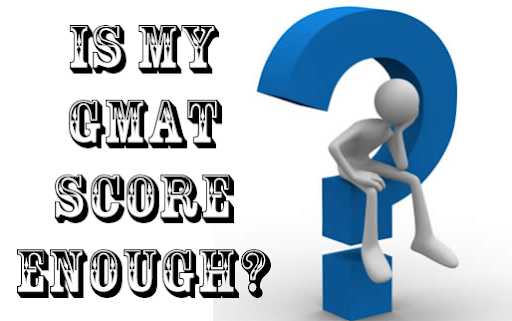Recently, the Graduate Management Admissions Council (the authors of the GMAT) announced a new article appears on the GMAT in 2012. This section, integrated reasoning, is currently being developed by GMAC. However, for now, the GMAT exam in 2011 retains the same format he had since he went to an adaptive computer test in 1997.
That said, students who take the GMAT in 2011 should be aware of some general trends. First, the median GMAT score upward trend over the last five years now, the median score is 540 on the GMAT. Interestingly, this upward trend has been observed since 2005 during the preceding five years, the median GMAT score remained stable at 520.
I can think of two possible explanations for this trend. Firstly, 2005 was the year that Pearson VUE has taken over administration of the GMAT exam from ETS. This switch may have caused test scores to reset a higher base. Second, a number of excellent new test prep companies have gained popularity since 2005. With new materials, test preparation GMAT, GMAT study additional options become available. In particular, GMAT test preparation and tutoring online GMAT online has become more accepted. The wealth of high quality materials for test preparation and greater access to qualified instructors GMAT may have contributed to higher GMAT scores.
That said, students who take the GMAT in 2011 should be aware of some general trends. First, the median GMAT score upward trend over the last five years now, the median score is 540 on the GMAT. Interestingly, this upward trend has been observed since 2005 during the preceding five years, the median GMAT score remained stable at 520.
I can think of two possible explanations for this trend. Firstly, 2005 was the year that Pearson VUE has taken over administration of the GMAT exam from ETS. This switch may have caused test scores to reset a higher base. Second, a number of excellent new test prep companies have gained popularity since 2005. With new materials, test preparation GMAT, GMAT study additional options become available. In particular, GMAT test preparation and tutoring online GMAT online has become more accepted. The wealth of high quality materials for test preparation and greater access to qualified instructors GMAT may have contributed to higher GMAT scores.

Another trend is the growing number of non-US citizens to pass the GMAT exam. In 2009, the majority of examination candidates sitting for the GMAT exam were not U.S. citizens. Although programs in the United States are still the preferred destination of most MBA candidates, business school applications in other countries have grown astronomically. Since 2005, MBA applications have more than doubled to schools located in India, Singapore and Spain.
Although schools in the United States are losing "market share", the absolute number of applicants is increasing due to higher overall level of GMAT exam candidates. In 2009, 263,000 candidates have the GMAT exam, compared to 200,000 in 2005. This represents a CAGR (compound annual growth rate) of around 7%. At this rate, the GMAT 2011 will be a little more than 300,000 exam candidates. However, it should be noted that, historically, the number of examination candidates GMAT increases more rapidly in times of economic recession. This seems to be true in the last economic cycle. GMAT test-takers in 2006 only increased from 4,000 in 2008 and 2009, GMAT examination candidates increased by more than 20,000 each year.GMAT Exam 2011 dates are available on the official site of GMAT.
A report seems to remain constant. Since 2000, the sex ratio on the subjects dealt GMAT were kept at 60/40. Since this ratio has remained stable for the past ten years, it is likely that this will be roughly the same for the 2011 GMAT.
Although schools in the United States are losing "market share", the absolute number of applicants is increasing due to higher overall level of GMAT exam candidates. In 2009, 263,000 candidates have the GMAT exam, compared to 200,000 in 2005. This represents a CAGR (compound annual growth rate) of around 7%. At this rate, the GMAT 2011 will be a little more than 300,000 exam candidates. However, it should be noted that, historically, the number of examination candidates GMAT increases more rapidly in times of economic recession. This seems to be true in the last economic cycle. GMAT test-takers in 2006 only increased from 4,000 in 2008 and 2009, GMAT examination candidates increased by more than 20,000 each year.GMAT Exam 2011 dates are available on the official site of GMAT.
A report seems to remain constant. Since 2000, the sex ratio on the subjects dealt GMAT were kept at 60/40. Since this ratio has remained stable for the past ten years, it is likely that this will be roughly the same for the 2011 GMAT.

I'm curious about the future of GMAT graduates at a compound annual growth rate of around 7%. At this rate, the GMAT 2011 will be a little more than 300,000 exam candidates. However, jobs that demand a GMAT level of education are not increasing at more than 2%. Consequently, there is a surplus of GMAT graduates. I know that airlines are asking that cabin stewards/stewardesses now ask for GMAT graduates and telephone call centres also ask for GMAT graduates but, quite simply, why do you need to be a GMAT graduate to serve vindaloo curry or politely answer the phone at a call centre with an American accent?
ReplyDeleteVery good comment Russell. Are employers asking too much for GMAT qualifications for low level jobs.
ReplyDelete